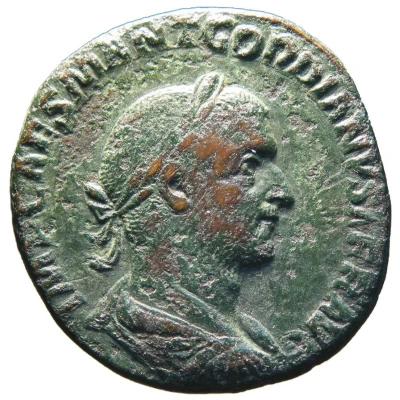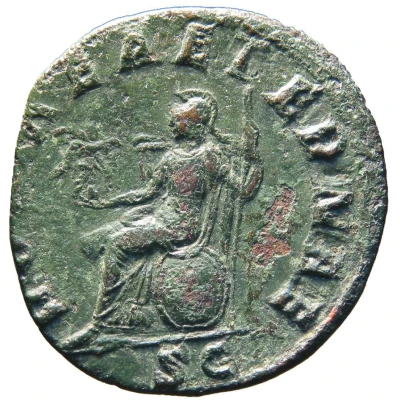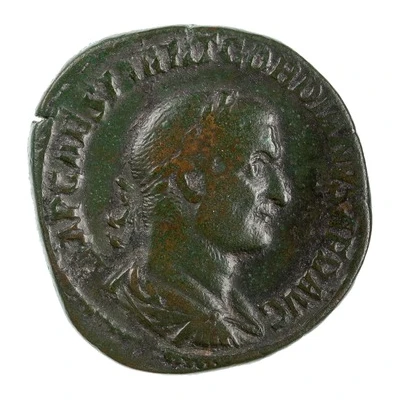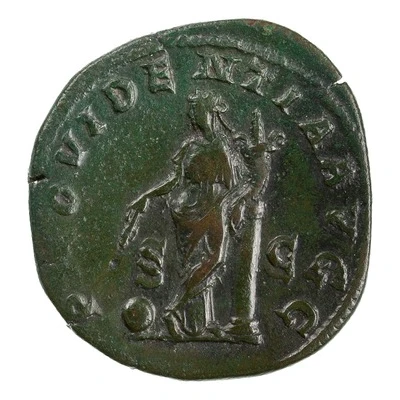


© Trustees of the British Museum
Sestertius - Gordian I ROMAE AETERNAE S C; Roma and Victory
238 year| Bronze | 18.5 g | 30.5 mm |
| Issuer | Rome › Roman Empire (27 BC - 395 AD) |
|---|---|
| Emperor | Gordian I (Marcus Antonius Gordianus Sempronianus Romanus Africanus) (238) |
| Type | Standard circulation coin |
| Year | 238 |
| Value | Sestertius (⅛) |
| Currency | Antoninianus, Reform of Caracalla (AD 215 – 301) |
| Composition | Bronze |
| Weight | 18.5 g |
| Diameter | 30.5 mm |
| Shape | Round (irregular) |
| Technique | Hammered |
| Demonetized | Yes |
| Updated | 2024-10-05 |
| Numista | N#280626 |
|---|---|
| Rarity index | 97% |
Reverse
Roma, helmeted, draped, seated left on shield, holding Victory in extended right hand and holding sceptre in left hand.
Script: Latin
Lettering: ROMAE AETERNAE S C
Translation:
Romae Aeternae. Senatus Consultum.
Everlasting Rome. Decree of the senate.
Comment
Mass varies: 17.18–20.58 g;Diameter varies: 30–31 mm;
Example of this type:
Trustees of the British Museum
Source:
Online Coins of the Roman Empire (OCRE)
Interesting fact
The Sestertius - Gordian I coin was minted during the reign of Emperor Gordian I, who ruled the Roman Empire from 238 to 244 AD. This coin was used as a means of payment and circulated widely throughout the empire. Despite its age, many of these coins have survived to this day and are highly sought after by collectors and historians. One interesting fact about this coin is that it features an image of the goddess Victory on the reverse side, which was a common motif on Roman coins during this period. The image of Victory was meant to symbolize the power and strength of the Roman Empire, and it was often depicted holding a wreath or a palm branch, as seen on this coin. The use of such imagery was a way for the Roman government to promote their ideals and values, and to reinforce the idea of Roman supremacy. Overall, the Sestertius - Gordian I coin is a fascinating piece of history that provides a glimpse into the economic, social, and political landscape of the Roman Empire during the 3rd century AD.



